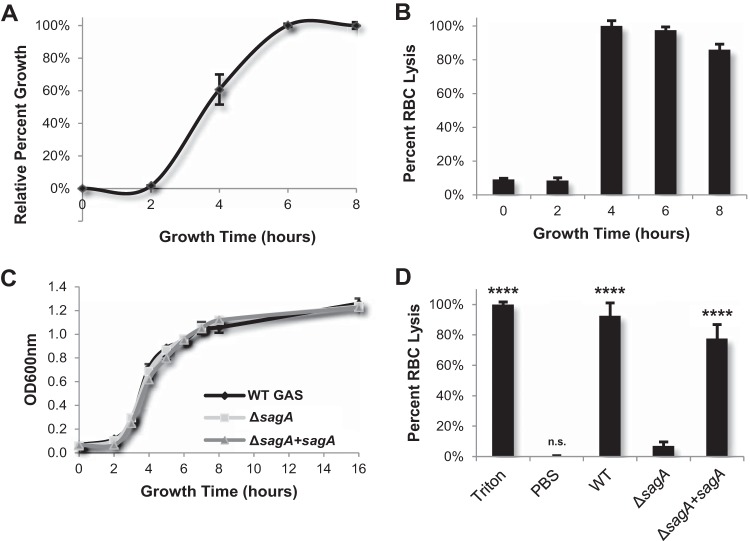FIG 1.
Active streptolysin S toxin is maximally produced during the mid-to-late log phase of GAS growth. (A) Growth of wild-type GAS in DMEM–10% FBS from 0 h to 8 h. (B) Lytic activity determined via red blood cell (RBC) lysis assay of WT GAS supernatants as a function of bacterial growth. Supernatant samples were taken directly from the cultures used to produce the growth curve shown in the upper left panel. (C) The levels of growth of WT, ΔsagA mutant, and sagA complement (ΔsagA+sagA) GAS strains in DMEM–10% FBS indicate consistent growth for all three strains. (D) An RBC lysis assay was performed using supernatants collected from WT and SLS-mutant cultures during the mid-to-late log phase. The upper and lower limits of RBC lysis were determined by using Triton X-100 detergent as a positive control and PBS as a negative control; percent RBC lysis was determined relative to these values. The results from three replicates are averaged for each condition, and error bars represent standard deviations. Significance was determined by ANOVA (P < 0.0001), and a post hoc Dunnett's test was performed to determine differences in the levels of RBC lysis between treatments. Significance is denoted by asterisks as described in Materials and Methods. Means of data from each condition were compared to the mean level of RBC lysis induced by the ΔsagA mutant.

